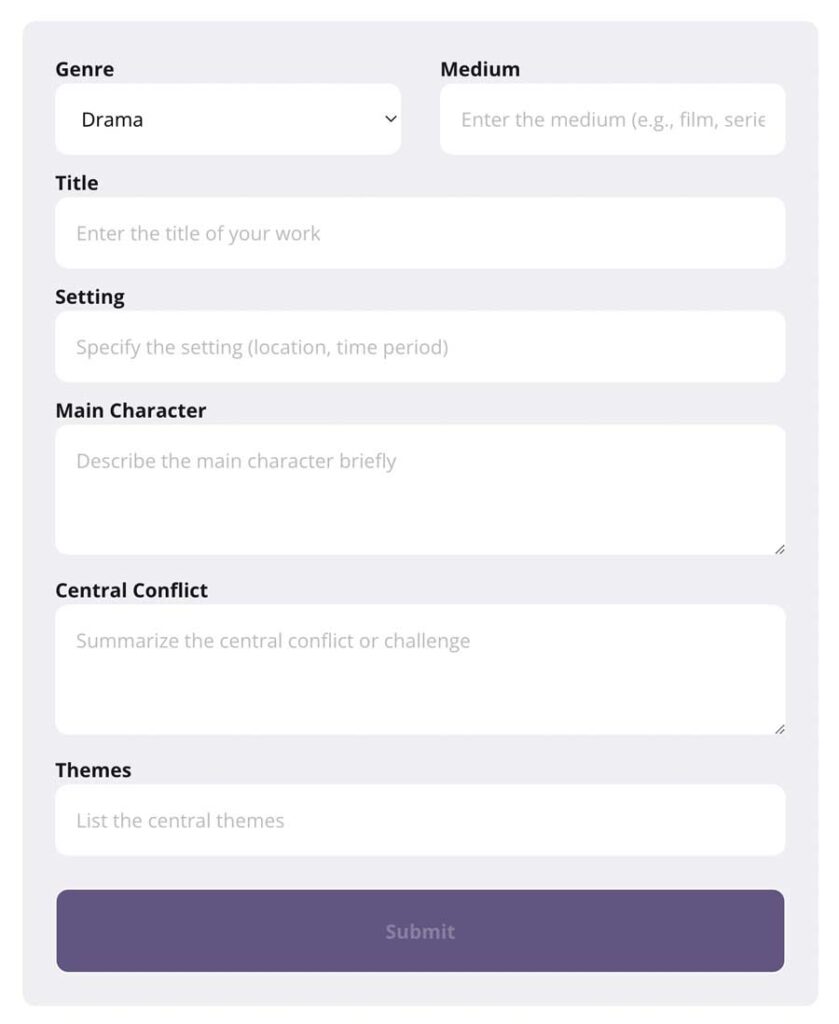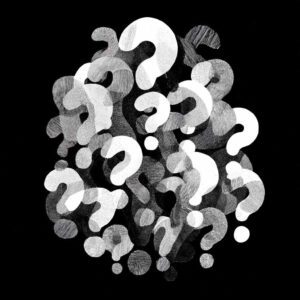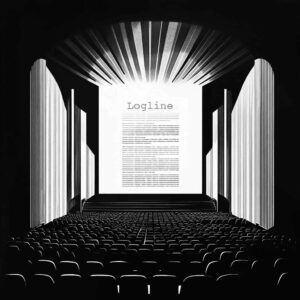What is a Logline?
A logline is a brief summary of a film or TV show that encapsulates the main plot, central conflict, and key characters in one or two sentences. It’s a quick pitch that captures the essence of your story, designed to grab the interest of producers, agents, and audiences. Industry professionals often decide whether to read a script based on the logline alone. A strong logline can open doors, while a weak one can close them.
Loglines are often confused with taglines and synopses. A logline is structured differently and serves a different purpose than a tagline or synopsis. A tagline is a catchy marketing slogan used on posters and ads, typically shorter and more provocative. A synopsis is a longer, detailed summary of the plot, usually a page or two. The logline, however, is a concise summary that highlights the main conflict and characters.

Try the Word.Studio Logline Crafter
An AI tool that helps you quickly generate an engaging and succinct logline that distills your film, play or book into a single, impactful sentence. Try the Logline Crafter now.
What are the Basic Elements of a Logline?
A great logline likely contains four specific components, each crucial for capturing the essence of your story. These elements work together to ensure clarity and intrigue, making the logline compelling and easy to understand. The most important reason all these elements must be present is to provide a complete and engaging snapshot that hooks the audience and entices them to learn more.
- Protagonist: The main character who drives the story.
- Inciting Incident: The event that sets the story in motion.
- Goal: What the protagonist aims to achieve.
- Conflict: The obstacles or antagonists that stand in the way.
Here is a detailed breakdown of each element.
The Protagonist
The protagonist is the main character who drives the story, serving as the focal point for the audience’s engagement. When dealing with multiple characters in a logline, it’s crucial to focus on the most central figures to the story’s main plot and conflict. Choose the character who drives the story forward. This is typically the one whose journey the audience follows most closely and who faces the central conflict. If the story revolves around a relationship or a duo, mention both characters, especially if their interaction is crucial to the plot. Even if the story involves an ensemble cast, the logline should remain concise. Focus on the key players who are most integral to the main storyline. Describe characters by their roles rather than names to save space and provide more context. For example, “a young scientist and a veteran astronaut” instead of specific names.
The Inciting Incident
An inciting incident is a pivotal event in a story that disrupts the protagonist’s normal life and sets the narrative in motion. It serves as a catalyst that propels the protagonist into the main action of the plot, compelling them to take action or make a decision that drives the story forward. This incident is crucial because it introduces the central conflict and gives the protagonist a goal to pursue, which shapes the direction of the entire narrative. This usually occurs relatively early in the story, often within the first 10-15% of the narrative. In a standard three-act structure, this event happens in the first act, after the exposition has established the characters and setting but before the main plot fully kicks in.
The Goal
When writing your logline, include the primary goal of the character or characters that drives the main plot of your story. The pursuit of this goal should create the primary conflict in the story and include “stakes”. It should clearly establish what’s at stake for the protagonist if the goal is not achieved. External goals (such as saving someone, winning a competition, or defeating an antagonist) are often more effective in a logline than internal goals (such as personal growth or overcoming fear) because they are more tangible and relatable.
Conflict
The conflict represents the obstacles or antagonists that stand in the way of the protagonist’s goal, creating tension and stakes that keep the audience invested. Identify the main opposition to the protagonist’s goal. This could be an antagonist, a societal issue, a natural force, or an internal struggle. If there are multiple obstacles, focus on the one that is the most significant or presents the highest stakes. When in doubt, look for the climax. Often, the main conflict is what leads to the climax of the story. Determine what the protagonist must overcome at the story’s peak.
Best Practices for Writing a Logline
Creating an effective logline involves several crucial strategies to ensure it captures the essence of your story and engages potential readers or viewers. Here are five key points to consider when writing your logline, along with the reasoning behind each:
- Be Concise: Aim for one or two sentences.
- Highlight the Unique Aspect: What makes your story stand out?
- Use Active Language: Make the plot sound dynamic and compelling.
- Include the Stakes: What does the protagonist stand to gain or lose?
- Avoid Names: Use character roles (e.g., “a young scientist” instead of “John”).
Aim for One or Two Sentences
A logline should be concise, typically confined to one or two sentences. This brevity is essential because it forces you to distill your story down to its most fundamental elements. Industry professionals, such as producers and agents, often have limited time and prefer loglines that quickly convey the main plot. By being concise, you respect their time and increase the chances of your logline making an impact.
Highlight What Makes Your Story Stand Out
Every story has something that sets it apart from others, whether it’s a unique twist, setting, or character dynamic. Highlighting this unique aspect in your logline is vital because it showcases what makes your story fresh and intriguing. This helps your logline grab attention in a crowded market, where many ideas can seem similar. Emphasizing what’s unique about your story piques curiosity and makes it memorable.
Use Active Language
Active language creates a sense of movement and urgency, making your logline more dynamic and compelling. Using strong, active verbs ensures the plot feels immediate and engaging. This approach not only enhances readability but also helps convey the excitement and energy of your story. Passive language can make the logline feel flat and uninteresting, whereas active language pulls the reader in and gives a sense of the narrative’s drive.
Include the Stakes
Including the stakes in your logline is crucial as it provides context for the protagonist’s actions and the overall story tension. By clearly stating what the protagonist stands to gain or lose, you highlight the urgency and importance of their quest. This not only makes the plot more compelling but also helps the reader or viewer understand the emotional and narrative weight of the story. Stakes give the logline a sense of purpose and urgency, which are key to maintaining interest.
Use Character Roles Rather than Names
Using character roles instead of names in your logline keeps it universal and focused. Names can be meaningless without context, but descriptive roles like “a young scientist,” “a determined detective,” or “a rebellious teenager” immediately convey the essence of the character. This approach also saves space and makes the logline easier to understand at a glance. Character roles help the reader quickly grasp who the main players are and their relevance to the story.
Examples of Loglines from Popular Films
1. The Shawshank Redemption (1994) Genre: Drama
Description: This film centers on Andy Dufresne, a banker who is wrongfully imprisoned for the murder of his wife and her lover. Sentenced to life at Shawshank State Penitentiary, Andy forms an unlikely friendship with Red, a long-term inmate known for procuring contraband. Over the years, Andy uses his financial acumen to help the warden launder money, all the while planning his escape. The story highlights themes of hope, friendship, and resilience against all odds.
Logline: A banker sentenced to life in Shawshank prison for a crime he didn’t commit forms an unexpected bond with a fellow inmate and plans a daring escape.
2. Jaws (1975) Genre: Thriller/Horror
Description: Set in the small beach town of Amity Island, this thriller follows Police Chief Martin Brody, who discovers that a giant great white shark is terrorizing the waters. Despite initial resistance from the town’s mayor, Brody teams up with marine biologist Matt Hooper and grizzled fisherman Quint to hunt down and kill the deadly predator before it claims more lives.
Logline: A police chief, a marine scientist, and a grizzled fisherman team up to hunt down a giant great white shark that is terrorizing a small beach town.
3. Star Wars: A New Hope (1977) Genre: Science Fiction/Fantasy
Description: In a galaxy far, far away, young farm boy Luke Skywalker dreams of adventure beyond his desert home. His life changes when he discovers a distress message from Princess Leia, held captive by the evil Galactic Empire. Luke joins forces with Jedi Master Obi-Wan Kenobi, rogue smuggler Han Solo, and others to rescue the princess and destroy the Empire’s powerful weapon, the Death Star.
Logline: A young farm boy discovers his destiny and joins a group of rebels to save the galaxy from the clutches of an evil empire.
4. The Godfather (1972) Genre: Crime/Drama
Description: This epic crime saga follows the powerful Corleone mafia family in New York. The aging patriarch, Vito Corleone, tries to secure the future of his empire, eventually passing the reins to his reluctant youngest son, Michael. As Michael ascends to power, he becomes deeply embroiled in the violent and ruthless world of organized crime, transforming into a feared and respected mafia boss.
Logline: The youngest son of a powerful crime family reluctantly takes over the family business after his father is nearly assassinated.
5. Jurassic Park (1993) Genre: Science Fiction/Adventure
Description: In this groundbreaking film, billionaire John Hammond creates Jurassic Park, a theme park populated by cloned dinosaurs. When a security breach leads to the dinosaurs escaping their enclosures, a group of visiting scientists and Hammond’s grandchildren must survive the ensuing chaos and find a way to escape the island.
Logline: A group of scientists and tourists struggle to survive after cloned dinosaurs escape from their enclosures in a theme park.
6. Forrest Gump (1994) Genre: Drama/Romance
Description: This film follows the life of Forrest Gump, a slow-witted but kind-hearted man from Alabama, who unwittingly influences several historical events in the 20th century. Through his unwavering love for his childhood friend Jenny, Forrest experiences remarkable adventures, including serving in Vietnam, meeting presidents, and becoming a shrimp boat captain.
Logline: A slow-witted but kind-hearted man narrates his extraordinary life story and his lifelong love for his childhood friend.
7. Inception (2010) Genre: Science Fiction/Thriller
Description: Dom Cobb, a thief skilled in the art of extraction, stealing secrets from within the subconscious during dreams, is offered a chance to have his past crimes forgiven. To do so, he must perform the seemingly impossible task of inception: planting an idea in someone’s mind without them knowing. As Cobb and his team dive deeper into dreams within dreams, they face escalating risks and blurred lines between reality and illusion.
Logline: A skilled thief is offered a chance to have his criminal record erased if he can successfully plant an idea into a target’s subconscious through dream invasion.
8. The Dark Knight (2008) Genre: Superhero/Crime Thriller
Description: Batman, with the help of allies Lieutenant Jim Gordon and District Attorney Harvey Dent, strives to dismantle the remaining criminal organizations plaguing Gotham City. Their efforts are disrupted by the rise of the Joker, a chaotic mastermind who unleashes a wave of anarchy and tests Batman’s moral limits, pushing the hero to confront the fine line between heroism and vigilantism.
Logline: Batman battles his most formidable foe, the Joker, who aims to plunge Gotham City into anarchy and test the limits of the hero’s morality.
9. Titanic (1997) Genre: Romance/Drama
Description: This epic romance set against the backdrop of the ill-fated R.M.S. Titanic follows Rose, a young aristocrat engaged to a wealthy but cruel man, and Jack, a poor artist who wins a ticket aboard the ship. The two fall deeply in love, but their romance is tragically interrupted when the Titanic strikes an iceberg and sinks, leading to a desperate struggle for survival.
Logline: A young aristocrat falls in love with a struggling artist aboard the ill-fated R.M.S. Titanic, leading to a tragic romance as the ship meets its catastrophic end.
10. Back to the Future (1985) Genre: Science Fiction/Adventure
Description: Teenager Marty McFly is accidentally sent 30 years into the past by his eccentric friend Doc Brown’s time-traveling DeLorean. In the past, Marty must ensure his parents meet and fall in love, or risk altering his own future. Along the way, he encounters younger versions of his parents and inadvertently disrupts the timeline, creating a race against time to set things right.
Logline: A teenager is accidentally sent thirty years into the past in a time-traveling DeLorean and must ensure his parents meet to save his own future.
Logline Structure and Templates
While there is no strict rule about the order in which the elements of a logline must appear, a logical structure helps ensure clarity and impact. The typical structure often follows this order: protagonist, inciting incident, goal, and conflict. However, it can vary depending on what aspect of the story you want to emphasize. The key is to ensure the logline is concise, clear, and engaging. Here are some templates you can use to craft your logline, along with explanations for each element:
Template 1: Protagonist + Inciting Incident + Goal + Conflict
“A [protagonist] must [goal] when [inciting incident] and [conflict].”
Example: “A young farm boy must destroy a powerful weapon when he discovers his true heritage and joins a rebellion against an evil empire.”
Template 2: Protagonist + Goal + Conflict + Stakes
“[Protagonist] must [goal] despite [conflict] to [stakes].”
Example: “A determined lawyer must uncover the truth about a conspiracy despite threats to his life to bring justice to his community.”
Template 3: Inciting Incident + Protagonist + Goal + Conflict
“When [inciting incident], [protagonist] must [goal] against [conflict].”
Example: “When a massive shark terrorizes a small beach town, a police chief must hunt it down against all odds.”
Template 4: Protagonist + Goal + Stakes + Conflict
“[Protagonist] must [goal] to [stakes] while facing [conflict].”
Example: “A young girl must traverse a mystical land to rescue her kidnapped brother while facing dangerous creatures.”
Write Your Logline
When should you write your logline? You should write a logline at both the beginning and the end of the writing process. Initially, it helps clarify your story’s focus and direction. At the end, it ensures your finished screenplay remains true to the original vision and helps refine your pitch for industry professionals.
Need help writing a good logline? We have designed a handy AI tool that will gather your character information, conflict, goal and plot points to draft a logline you can use as a starting point.









